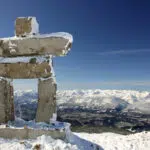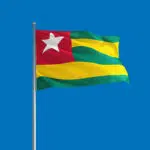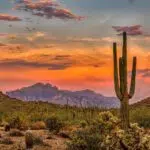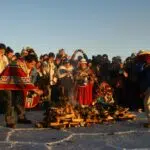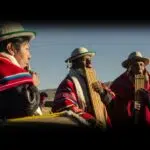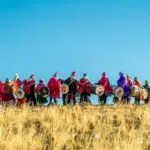Aymara New Year is observed every year on June 21 in Bolivia. It is the holiest day for the country’s Aymara people. Gratitude to Mother Earth is at the heart of indigenous cultures everywhere, and the Aymara are no exception. The Aymara people are pre-Inca and believed to be descendants of the Tiwanaku civilization. Today marks the Winter Solstice in the Southern Hemisphere and Aymara New Year. An opportunity to purge the old and ring in the new. For Aymara, this is a sacred day where humans can reconnect with nature and their ancestors. A chance to rekindle our long-forgotten connection to the cosmos.
History of Aymara New Year
Among Bolivia’s 38 ethnic groups, the Aymara are the most well-known. They are ancient people whose culture is still alive today. From brutal invasions to rapid modernization, the Aymara have survived violent or insidious assimilation attempts. Under the Inca empire, thriving Aymaran dynasties and society virtually disappeared. The Inca introduced new customs, food, religious cults, and art forms. The Spaniards arrived in the 14th century, determined to ‘civilize’ native groups and erase indigenous culture. They exploited the Aymara as household help or as workers in fields, mines, and cocoa plantations.The Aymara persisted despite violent oppression, even if the conquerors were in the dark about it. While privately observing Aymara traditions at home, they pretended to submit to Spanish culture and accept Christianity. The Aymara still speak Spanish or Quechua, the Inca language, in public but chat in Aymara at home.The Aymara believe in a multi-spirit universe. A central part of Aymaran knowledge is the cosmic calendar, where events in the sky and earth impact life on earth. June 21 is a significant solstice event in Bolivia. On this day each year, a temple in the ancient city of Tiwanaku comes alive with Aymara rituals and celebrations. The day marks the Winter Solstice in the Southern Hemisphere and the Aymara New Year, a celebration of the sun’s return, powerful cosmic energy, and the start of a new agricultural cycle. It’s the shortest day of the year, and the Aymara keeps vigil all night until the sun comes up at Tiwanaku. Shamans make offerings to the sun and earth for abundance in the new year. After the prayers and sacred rituals, the party begins in earnest. It’s a time to dance away past demons to make way for hope and good energy.
Aymara New Year timeline
Aymara families make their home in Altiplano, a high plateau in the Andes mountains.
The Aymara face an onslaught of suppression and forced cultural assimilation.
The indigenous Aymara tribe rises against the Spanish Crown.
Juan Evo Morales Ayma serves as the first Bolivian President of indigenous Aymara descent.
Aymara New Year FAQs
What other celebrations are there among the Aymara people?
The planting and harvest seasons, which coincided with the summer and winter solstices, are regarded as two annual festivals by the Quechuas and Aymara. A few tribes in the Amazon region also observed the solstice, each following their traditions and rites.
What are some Aymara traditions?
The Aymara culture has many traditional aspects. They live in extended families, and there is no division of tasks or rights between men and women. They eat and mostly cook with potatoes, quinoa, beans, fish, and llama.
Where is the New Year Aymara celebrated?
The Aymara New Year celebrations take place at over 200 locations in Bolivia. Besides Tiwanaku, ceremonies also occur in Inka Raqay, Uyuni, and Samaipata.
Aymara New Year Activities
-
Experience the magic at Tiwanaku
Seize the first rays of the light as it rises over the Tiwanaku ruins. The Aymara New Year brings diverse individuals together, including the pious, the curious, politicians, and the paparazzi.
-
Dance your worries away
Today is about movement and fresh energy, whether you want to pop, lock, freestyle, or sway while in meditation. Dances are a great way to celebrate!
-
Leave the past behind
Something or someone weighing you down? Consciously remove yourself from toxic situations. Aymara rites involve the symbolic burning of all the bad in the past year.
5 Interesting Facts About La Paz
-
It’s not Bolivia’s capital
The capital of Bolivia is Sucre and La Paz is just the de facto capital.
-
The resort for alcoholics
The city’s Elephant Cemetery hotels offer the bare-minimum facilities for alcoholics to live out their final days.
-
What lies beneath
Many official buildings have dead bodies of llamas buried underneath, believed to bring blessings from mother nature.
-
The famous Cholita Wrestling
The famous Cholita Wrestling originated as a way for women who were victims of domestic violence to find solidarity.
-
It’s home to the craziest prison
San Pedro Prison is a self-contained world with guided tours, insane parties, children, families, and cocaine labs.
Why We Love Aymara New Year
-
It’s a celebration of heritage
Aymara New Year is a grand celebration of indigenous heritage. Their story is a testament to continual resistance and cultural pride.
-
It’s a lesson about resistance
The Aymara never backed down despite powerful historical forces. They personify courage in a world increasingly ruled by fear and conformity.
-
It’s a day for everyone
Everyone can enjoy the Aymara New Year. The festival is open to everyone, whether you're a believer, sunrise chaser, or partygoer.
Aymara New Year dates
| Year | Date | Day |
|---|---|---|
| 2023 | June 21 | Wednesday |
| 2024 | June 21 | Friday |
| 2025 | June 21 | Saturday |
| 2026 | June 21 | Sunday |
| 2027 | June 21 | Monday |










